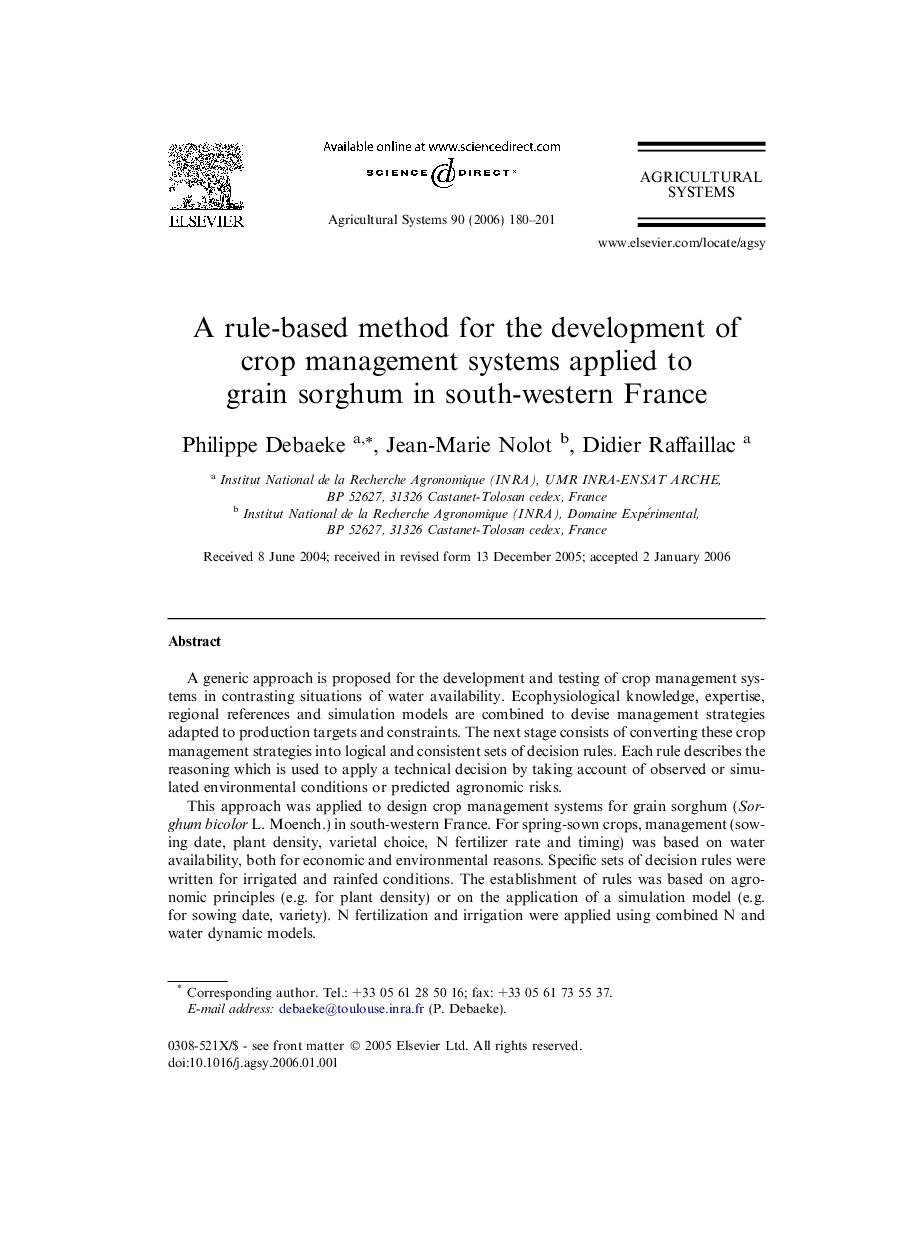| Article ID | Journal | Published Year | Pages | File Type |
|---|---|---|---|---|
| 4491932 | Agricultural Systems | 2006 | 22 Pages |
A generic approach is proposed for the development and testing of crop management systems in contrasting situations of water availability. Ecophysiological knowledge, expertise, regional references and simulation models are combined to devise management strategies adapted to production targets and constraints. The next stage consists of converting these crop management strategies into logical and consistent sets of decision rules. Each rule describes the reasoning which is used to apply a technical decision by taking account of observed or simulated environmental conditions or predicted agronomic risks.This approach was applied to design crop management systems for grain sorghum (Sorghum bicolor L. Moench.) in south-western France. For spring-sown crops, management (sowing date, plant density, varietal choice, N fertilizer rate and timing) was based on water availability, both for economic and environmental reasons. Specific sets of decision rules were written for irrigated and rainfed conditions. The establishment of rules was based on agronomic principles (e.g. for plant density) or on the application of a simulation model (e.g. for sowing date, variety). N fertilization and irrigation were applied using combined N and water dynamic models.A novel methodology combining crop diagnosis, analytical trials and crop simulation was developed to evaluate the management systems. An irrigated and a rainfed rule-based management system were compared near Toulouse (S.W. France) from 1995 to 2002. The profitability of rainfed low-input management was confirmed for sorghum in spite of high yields under irrigation (up to 10 t ha−1). The adaptation of sorghum management in rainfed conditions was mainly achieved through early maturing cultivars and by reducing N applications by 65%.
